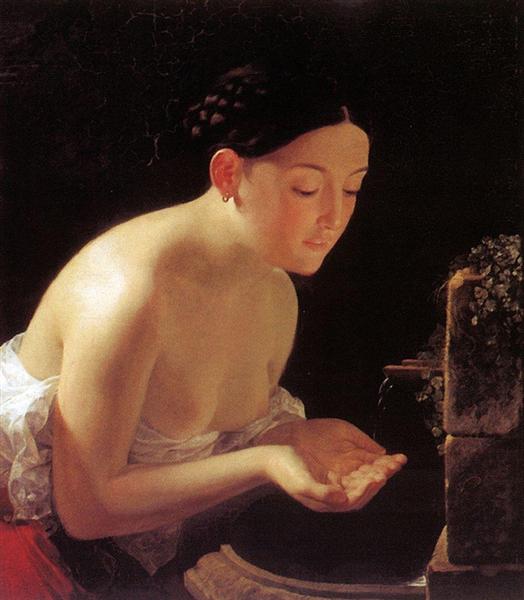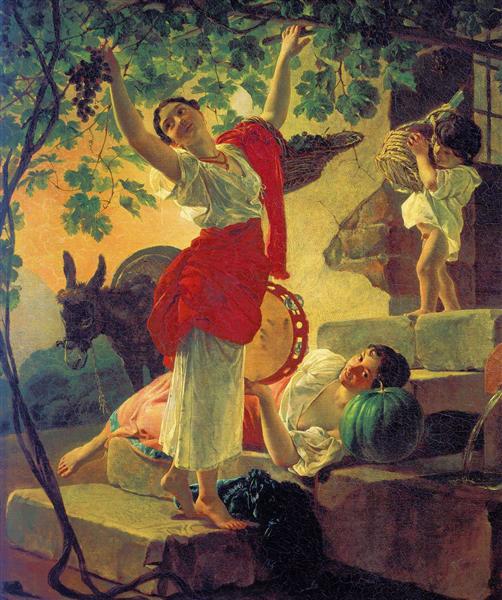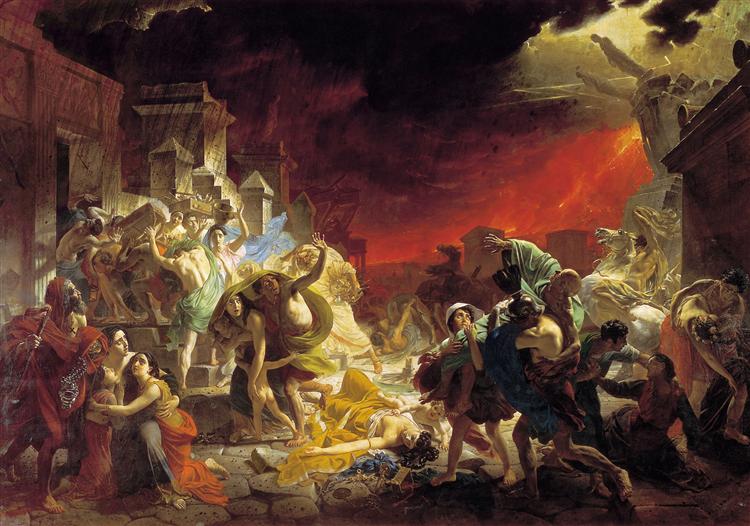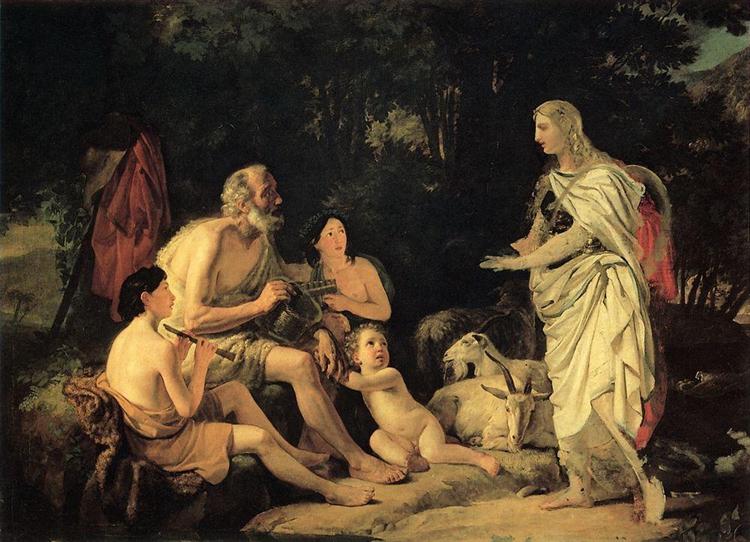
In the painting “Italian Morning” Karl Bryullov depicts a figure in a kind of landscape interior – fenced off from the outside world, under a dense canopy of branches. This is in the exact sense of the “nook”. Thus, a crafty game with the viewer is started: he is invited to feel in the position of a spy, seeing what usually happens in intimate seclusion and is obviously not intended for prying eyes. This kind of intimization of the spatial environment, embracing the figure with affectionately enveloping chiaroscuro, motivates the image of naked and semi-naked figures and at the same time gives this image a touch of ticklish frivolity. In the grace of this risky game, Bryullov was inimitable. This property was an important component of the success that Bryullov won in the hearts of “lovers of the elegant”, and although they were mostly silent about this, it was this property that was definitely “pronounced” by Bryullov’s epigones, who first of all adopted art to seduce with such somewhat perfumery “beauties”.
Following the receipt of the Italian Morning in St. Petersburg, an article dedicated to the painting was published by the conference secretary of the St. Petersburg Academy of Arts Vasily Grigorovich. The author saw in this work nothing more and nothing less than a promise to become in time “one of the great artists of this century.” Now it seems strange to say the least, the lofty pathos of such a conclusion in relation to the picture, which has, in essence, the character of an elegant trinket or “toy”, as the same Grigorovich said in a private circle. But it is precisely in this discrepancy that the formula of the secret that made the hearts of contemporaries beat and tremble before the art of Bryullov is revealed.
“I will shed tears over fiction,” and “the genius of paradoxes is a friend.” Bryullov invented a way to combine in a pleasant proportion the different things that recently appeared as incongruously opposite, even hostile, and to combine suddenly, as if in an instant inspiration. This is a different essence on one side – classical proportionality, the continuity of linear melos, harmony that presupposes clear calmness, timeless contemplative duration, and on the other – romantic impulsive discreteness that overturns this timeless statics, a glimpse of beauty and meaning in unintended, random configurations of things and events.
And almost the main role in the implementation of this paradoxical combination is played by the unintentional effect. This is exactly what Grigorovich said in his response, albeit as a slip of the tongue. Not the content, but the intonation, the music of the entire article is set by the word “accidentally”. “Not for comparison, but as an example,” the author recalls Venus de Medici in order to express doubt that “the artist found the idea of composing this statue in himself”. No, “he accidentally saw the most beautiful woman emerging from the water.” And then the same – about “Italian Morning”: “The idea of Bryullov’s painting, I’m sure, is hardly invented. He probably saw a lovely girl in this position by accident. ” “The girl washing at the fountain is not Venus: therefore, she should not demand ideal perfection in Mr. Bryullov’s work …”
Year of painting: 1823.
Painting dimensions: no data.
Material: canvas.
Writing technique: oil.
Genre: portrait.
Style: romanticism.
Gallery: Kunsthalle, Kiel, Germany.


